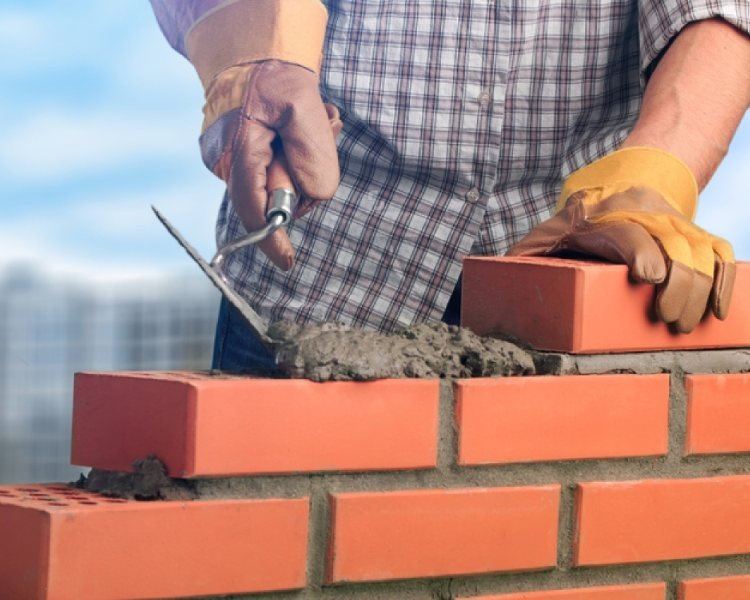Specialist Masonry Contractor Services: Enhance Your Property Today
Specialist Masonry Contractor Services: Enhance Your Property Today
Blog Article
Unlocking the Keys of Lasting Masonry Building And Construction Practices for Eco-Friendly Buildings
Among the myriad approaches to environment-friendly structure, sustainable stonework building and construction stands out as a reliable and resilient method that holds a wealth of untapped potential. From the choice of products to innovative building and construction methods, the tricks to accomplishing sustainability within masonry building and construction are diverse and fascinating.
Benefits of Lasting Masonry Building And Construction
Accepting lasting masonry construction practices not only decreases ecological effect yet likewise supplies long-term economic benefits to builders and areas. By making use of materials like recycled blocks, obstructs, and rocks, contractors can substantially lower the carbon impact of their tasks while advertising resource performance. Furthermore, sustainable stonework construction techniques, such as correct insulation and thermal mass properties, can enhance energy performance within structures, bring about minimized operational costs with time.
Additionally, the resilience and resilience of masonry structures add to long-term economic advantages. Structures created making use of sustainable masonry methods often call for less repair and maintenance, equating to set you back financial savings for builders and residential property proprietors. The durability of masonry materials likewise guarantees that structures remain secure and safe and secure, reducing the requirement for constant remodellings or replacements.
Eco-Friendly Masonry Materials
Making use of green stonework products is an essential step in the direction of improving the sustainability of building and construction practices and reducing ecological effect while optimizing long-lasting economic advantages. Lasting stonework products are sourced, created, and made use of in a way that minimizes total environmental effect. Lasting concrete blocks integrate recycled aggregates and may feature improved insulation residential or commercial properties, contributing to energy effectiveness in structures.
Moreover, natural products like adobe, rammed earth, and straw bales give excellent thermal mass residential properties, minimizing the requirement for heating and cooling energy. These products are commonly in your area available, promoting regional economic climates and reducing transportation-related carbon discharges. By choosing green masonry materials, building jobs can substantially reduce their environmental impact and add to the creation of much healthier, a lot more sustainable constructed atmospheres.
Energy-Efficient Masonry Techniques
Energy effectiveness plays a crucial duty in boosting the sustainability of stonework construction practices. One essential energy-efficient stonework technique is the use of thermal mass, which involves integrating dense products like concrete or block right into the building's structure to soak up and keep warm.

Innovations in Lasting Masonry
Current innovations in lasting stonework techniques have produced innovative techniques that are reshaping the construction industry. One such innovation is the advancement of self-healing concrete, which makes use of germs installed within the concrete to heal splits autonomously. This innovation not just minimizes upkeep expenses however likewise boosts the longevity of stonework frameworks, adding to their sustainability.
An additional notable development is using recycled accumulations in stonework building - masonry contractor. By integrating materials such as crushed ceramic waste or recycled glass right into concrete blends, contractors can minimize the environmental influence of building and construction jobs while preserving architectural stability. This technique not just draws away waste from landfills however additionally saves all-natural resources, making it a vital development in sustainable masonry building and construction
Moreover, the integration of digital layout devices, such as Structure Details Modeling (BIM), is reinventing the method masonry frameworks are planned and created. BIM enables more precise computations, decreased product wastefulness, and boosted power performance, ultimately causing more sustainable building techniques. These innovations collectively signify an encouraging future for lasting stonework building in the era of environmentally friendly buildings.
Future Trends in Stonework Sustainability
With the ingenious strides helpful site made in sustainable masonry techniques, the future patterns in masonry sustainability are positioned to further transform the building sector. Among the vital patterns shaping the future of masonry sustainability is the raised assimilation of technology. Developments such as Structure Information Modeling (BIM) and digital reality simulations are being used to maximize stonework construction procedures, bring about reduced product waste and enhanced energy effectiveness in buildings.
Additionally, the growth of novel sustainable products is set to play a significant role in enhancing the eco-friendliness of stonework construction. masonry contractor. Innovations like self-healing concrete, recycled aggregates, and bio-based binders are obtaining traction for their capability to minimize environmental influence while preserving structural integrity

Conclusion
In verdict, sustainable masonry construction techniques offer many benefits for environmentally friendly structures. By using green products and energy-efficient strategies, stonework can add to a much more lasting constructed atmosphere. Innovations in sustainable stonework are continuously being created to better enhance the environmental efficiency of structures. Looking in the direction of the future, the pattern of masonry sustainability is anticipated to expand, causing more ecologically friendly and energy-efficient building techniques in the years to come.
Report this page